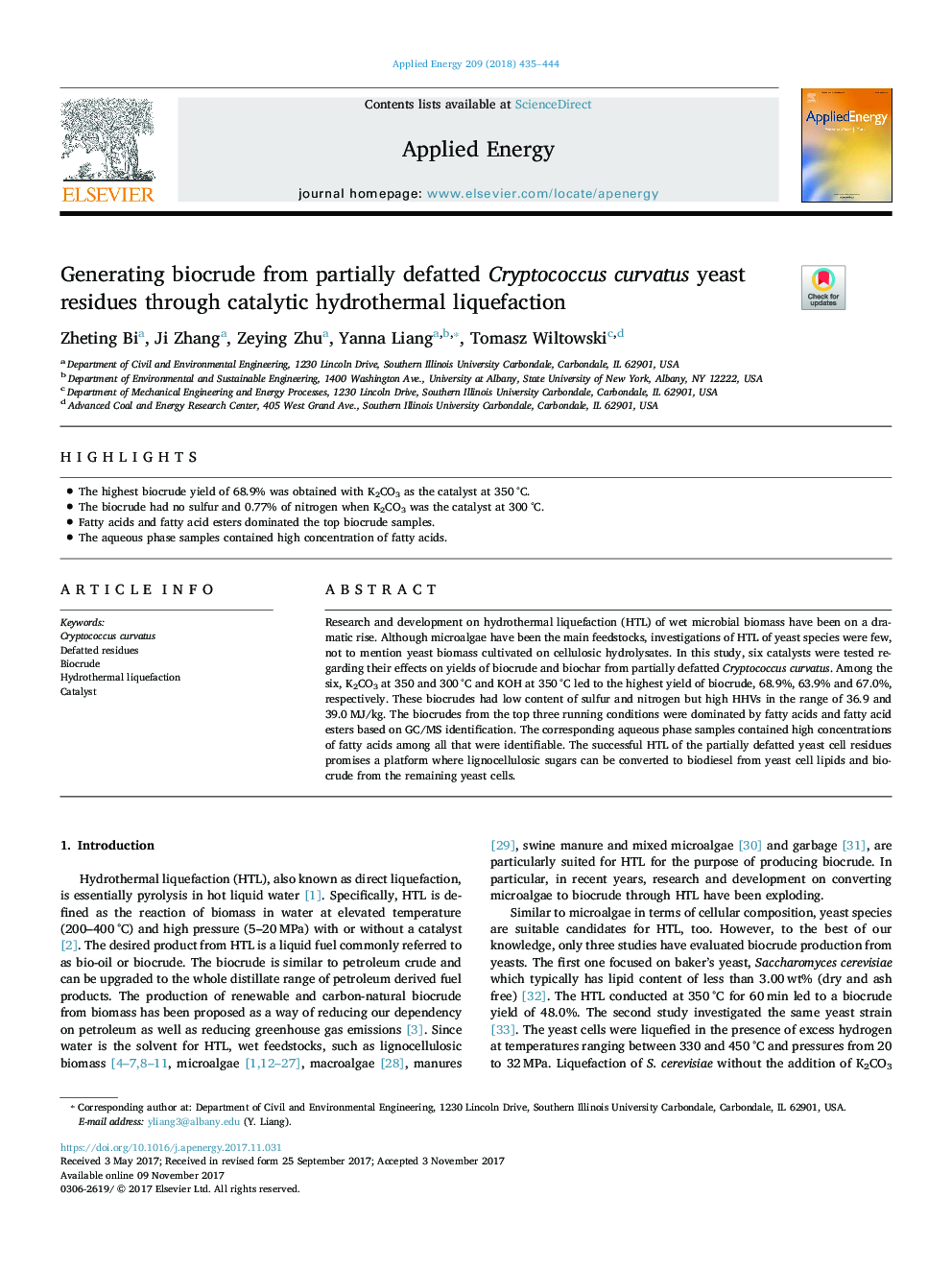| Article ID | Journal | Published Year | Pages | File Type |
|---|---|---|---|---|
| 6681580 | Applied Energy | 2018 | 10 Pages |
Abstract
Research and development on hydrothermal liquefaction (HTL) of wet microbial biomass have been on a dramatic rise. Although microalgae have been the main feedstocks, investigations of HTL of yeast species were few, not to mention yeast biomass cultivated on cellulosic hydrolysates. In this study, six catalysts were tested regarding their effects on yields of biocrude and biochar from partially defatted Cryptococcus curvatus. Among the six, K2CO3 at 350 and 300â¯Â°C and KOH at 350â¯Â°C led to the highest yield of biocrude, 68.9%, 63.9% and 67.0%, respectively. These biocrudes had low content of sulfur and nitrogen but high HHVs in the range of 36.9 and 39.0â¯MJ/kg. The biocrudes from the top three running conditions were dominated by fatty acids and fatty acid esters based on GC/MS identification. The corresponding aqueous phase samples contained high concentrations of fatty acids among all that were identifiable. The successful HTL of the partially defatted yeast cell residues promises a platform where lignocellulosic sugars can be converted to biodiesel from yeast cell lipids and biocrude from the remaining yeast cells.
Related Topics
Physical Sciences and Engineering
Energy
Energy Engineering and Power Technology
Authors
Zheting Bi, Ji Zhang, Zeying Zhu, Yanna Liang, Tomasz Wiltowski,
